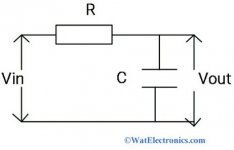I've also found that the 3116 amps, certainly as found on Cheap Chinese amp boards, to be a total waste of; time, $ and hopes.
Generating a tinny and harsh sound... unpleasant to listen to, let alone Enjoy.
This, despite trying 3 different amp boards.. including the claimed 'Best' version (this Forum)
and fitting.. ALL.. the improvements suggested Here .. back when the 3116 was a 'craze' and Fanboys were everywhere.
Simply a shitty sounding amp.
Tried it again yesterday, experimentally.... same unpleasant results.
It's now out in the trash.
Generating a tinny and harsh sound... unpleasant to listen to, let alone Enjoy.
This, despite trying 3 different amp boards.. including the claimed 'Best' version (this Forum)
and fitting.. ALL.. the improvements suggested Here .. back when the 3116 was a 'craze' and Fanboys were everywhere.
Simply a shitty sounding amp.
Tried it again yesterday, experimentally.... same unpleasant results.
It's now out in the trash.
Thank you!
Please tell me, if you put larger interstage separating capacitors, can this worsen the sound? For example, according to the TDA7560 datasheet, the capacitors at the input are 0.47 microfarads. If I put 2.2 microfarads, is that bad?
I just have a lot of such capacitors in the circuit. And it is profitable to buy them in one denomination.
Please tell me, if you put larger interstage separating capacitors, can this worsen the sound? For example, according to the TDA7560 datasheet, the capacitors at the input are 0.47 microfarads. If I put 2.2 microfarads, is that bad?
I just have a lot of such capacitors in the circuit. And it is profitable to buy them in one denomination.
Thank you! That's why I'm asking. Wouldn't it be worse if, according to the calculations for the TDA7560, 0.47 microfarads are needed, and I put 2.2 microfarads? And in general, if my pre-amplifiers are made on operational amplifiers, can you always set 2.2 microfarads?
I see no problem, even you can use 10uf at the output of your preamp. Some people bypass that cap using smaller value cap like 10 nano farad but i don't recommend that. As i said before 2.2uf is a standard value. Anyway always use a low pass filter at the input of your amplifier using 1Kohm & 330-680pf ceramic to filter out RF garbage.
Thank you!
And the difference between 1 microfarad and 2.2 microfarads is significant? If 2.2 gives a bandwidth of 3hz, then 1 should give 6hz?
And the TDA7560 has a bandwidth starting at 20hz. So 1 microfarad is ok? Or am I thinking wrong?
Thanks again for taking the time to have this conversation.
And the difference between 1 microfarad and 2.2 microfarads is significant? If 2.2 gives a bandwidth of 3hz, then 1 should give 6hz?
And the TDA7560 has a bandwidth starting at 20hz. So 1 microfarad is ok? Or am I thinking wrong?
I do not understand very well. Perhaps you have an example of how to install such a filter at the input of a microphone amplifier?use a low pass filter at the input of your amplifier
Thanks again for taking the time to have this conversation.
No, the chip will work all the way to "zero frequency".TDA7560 has a bandwidth starting at 20hz
We NEVER want "zero frequency", DC, to pass all the way through an amplifier chain. We do not hear barometric pressure.
The 20Hz in the data is for the suggested 0.1uFd input caps. 0.1uFd at 100k is 15.9Hz (rounded to 20).
1uFd and 100k would be 1.59Hz. 2uFd would be 0.8Hz. 2.2uFd is 0.72Hz.
You do not try to cut sub-sonics at a microphone input. You recover the weak signal without harm, boost it, and then filter.at the input of a microphone amplifier?
This is an example of first order passive low pass filter. The idea is to block very high frequency (RF & VHF) which pollutes desirable signal frequencies (20hz-20khz) & can make your amplifier unstable. Generally we aim for 200khz & up. Google to know more about it. You can find old threads about this subject.


Here's my TDA 7377's , 3 amps, different capacitors. PIO Sangamo, MKT cap, Sprague bathtub caps.TDA 7377 An Oldy but still a good one... 12 V single supply. It was intended for Car audio and.. Widely used., in a lot of Premium head units. as quad speakers or 2.1 (sub) setups
Sound is surprisingly Good. Wayyyy better sounds than the 3116 /8s things (from experience) 🙂
Buy a cheap a** Chinee Kit ~12$ and substitute decent quality parts Caps, Op amp etc and you will be surprised..
I was.
Nice easy to build amps. Sounds nice.
Either the 12V or the 100/180W spec is not required? The maximum power you can get into 4 Ohms from 12V and a bridged output is 18W. Many auto stereo's spec 22W because they assume the auto alternator pushes the battery up to 14.5 Volts. To get 100W into 4 Ohms, you need at least 29VDC, and that's with a bridged amp. To get 180 Watts into 8 Ohms you need a total 108VPP, ie +/-54VDC for a single output or +/-27VDC (54V total) for a bridged amp. Any auto stereo with more than 22W/channel (88W=4 channels) uses a voltage inverter. The 80W output of the TDA7560 is a total square wave, 100% distortion, using an 18VDC supply, into 2 ohms.
Last edited:
Running, I can grip the heat sink with my thumb & fingers. It's not that hot. I've had these for over 5 years no problems.Inadequate heatsink.
Sure, go ahead and build it with a larger heatsink.
- Home
- Amplifiers
- Chip Amps
- Chip amp power single supply